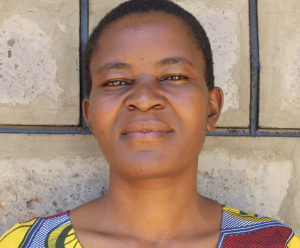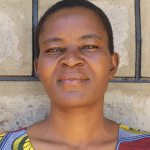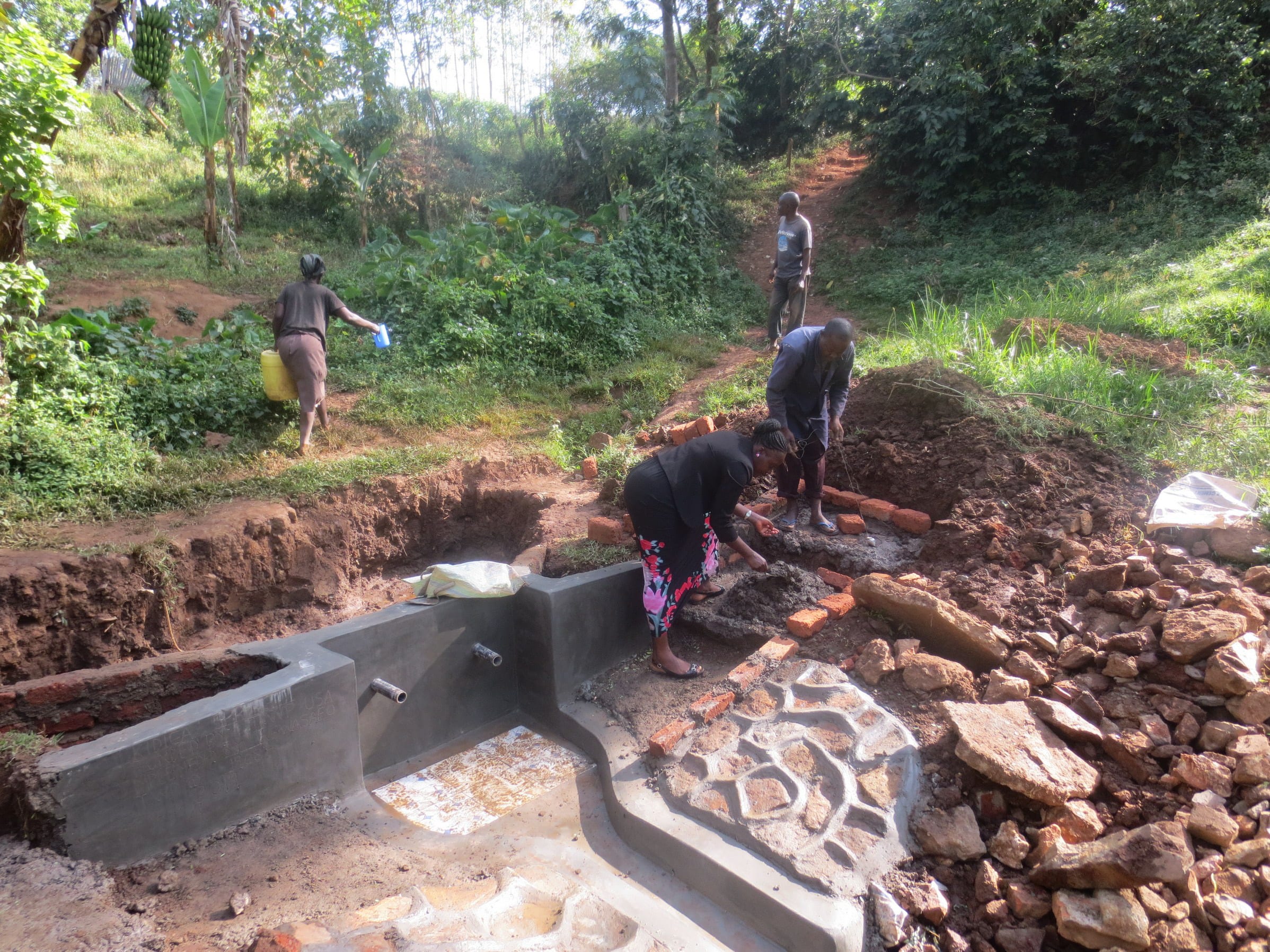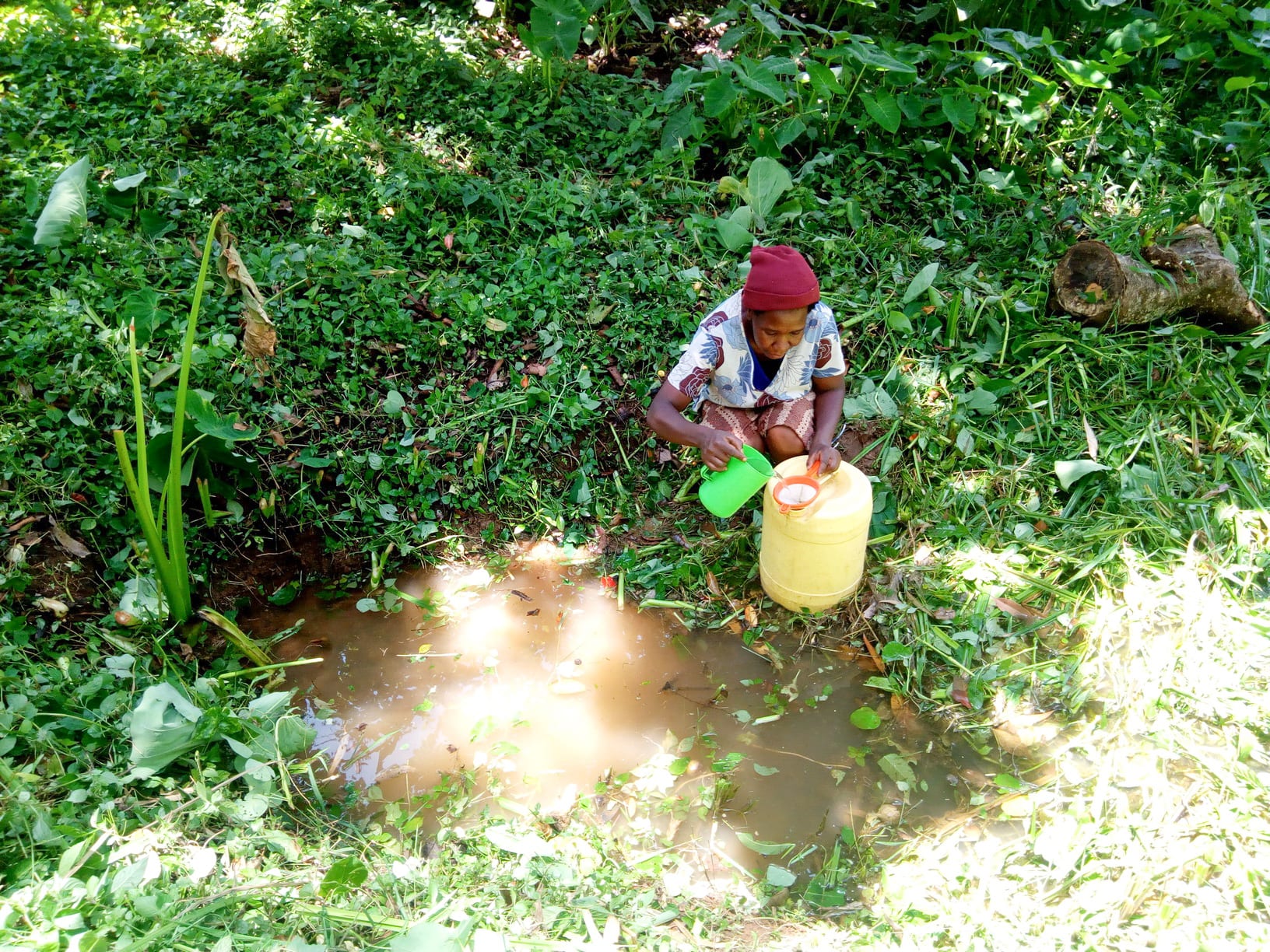There are 210 people living in Rosterman who rely on dirty water from Kidiga Spring.
You take a left from a small shopping center down a small footpath until you reach the spring. These dirt paths get muddy and slippery when it rains. The area is overgrown, but you're able to glimpse a few mud homes along the path.
The water at Kidiga Spring is open to contamination. Since the spring is within walking distance of the shopping center, there are shopkeepers who also come here to fetch their water. The heavy use of the spring further dirties the water, since people dunk their water containers directly under the surface.
There are disease outbreaks among those who drink water from Kidiga Spring. People constantly contend with diarrhea. They even battle skin infections after bathing in the dirty water.
"A lot of money has been spent on medication. Three years ago, we lost our father-in-law who had typhoid and the family members could not raise money for treatment," said Beatrice Kidiga.
"It's our prayer that the same will not repeat again."
Rosterman has always been known as a mining community. Most people living here earn their daily bread from mining the gold pocketed in the land. Many families have lost a loved one in a mining accident, but the young people still choose to mine.
There are others who have purchased a motorbike so that they can run motorbike taxi businesses.
But when the key breadwinners fall ill from drinking dirty water, the entire family suffers.
What we can do:
Training
Most of the households have a pit latrine but they need to be taught about washing hands after visiting the toilet.
Community members will attend hygiene and sanitation training for at least two days. This training will ensure participants have the knowledge they need about healthy practices and their importance. The facilitator plans to use PHAST (Participatory Hygiene and Sanitation Transformation), CLTS (Community-Led Total Sanitation), ABCD (Asset-Based Community Development), group discussions, handouts, and demonstrations at the spring. One of the most important topics we plan to cover is the handling, storage, and treatment of water. Having a clean water source will be extremely helpful, but it is useless if water gets contaminated by the time it’s consumed. Handwashing will also be a big topic, since handwashing is one of the most efficient ways to keep germs from spreading.
Training will also result in the formation of a committee that will oversee operations and maintenance at the spring. They will enforce proper behavior around the spring and delegate tasks that will help preserve the site, such as building a fence and digging proper drainage. The fence will keep out destructive animals, and the drainage will keep the area’s mosquito population at a minimum.
Sanitation Platforms
While most people have latrines, these latrines are made of mood and have dangerous wooden floors. The wood is prone to rot, which puts the user in danger of falling through into the pit.
On the final day of training, participants will select five families that should benefit from new latrine floors.
Training will also inform the community and selected families on what they need to contribute to make this project a success. They must mobilize locally available materials, such as bricks, clean sand, hardcore, and ballast. The five families chosen for sanitation platforms must prepare by sinking a pit for the sanitation platforms to be placed over. All community members must work together to make sure that accommodations and food are always provided for the work teams.
Spring Protection
Protecting the spring will ensure that the water is safe, adequate and secure. Construction will keep surface runoff and other contaminants out of the water. With the community’s high involvement in the process, there should be a good sense of responsibility and ownership for the new clean water source.
Fetching water is predominantly a female role, done by both women and young girls. Protecting the spring and offering training and support will, therefore, help empower the female members of the community by giving them more time and efforts to engage and invest in income-generating activities.

 Protected Spring
Protected Spring
 Rehabilitation Project
Rehabilitation Project







































